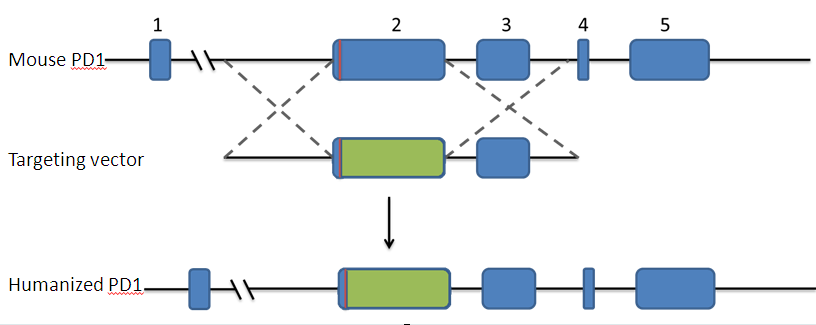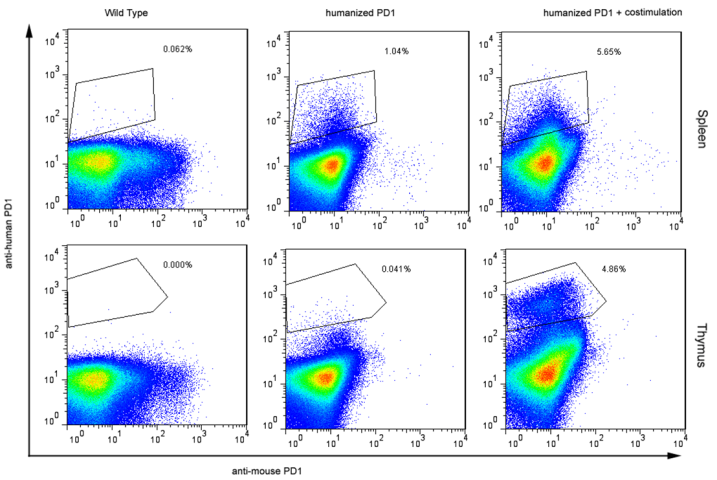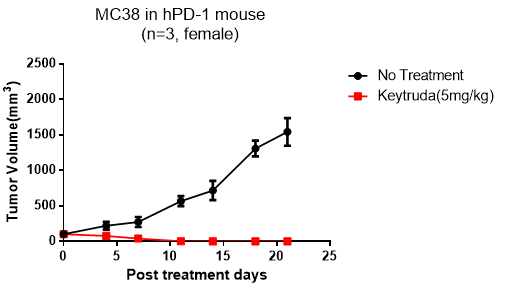General Information
Strain Name | B6-Pdcd1em1(hPdcd1)/Vst |
Common Name | hPD-1 |
Origin | Beijing Vitalstar Biotechnology Co., Ltd. |
Background | C57BL/6NCrl |
Coat Color | Black |
Related gene | PD1 |
Development
PD-1 is an important immunosuppressive molecule and a member of the CD28 superfamily. Vitastar has developed PD-1 humanized mice, which, after inoculation with MC38 tumor cells and injection with the PD-1 inhibitor Keytruda, show significant tumor reduction and disappearance, and can be used for PD-1-related efficacy or drug screening experiments. Additionally, targeting PD-1 has significant implications for cancer immunotherapy, infection resistance, autoimmune disease resistance, and organ transplantation survival.
Using the CRISPR-Cas9 assisted method, the extracellular domain of the mouse programmed cell death 1 gene (Pdcd1 or PD-1, programmed death 1) was replaced with the human sequence. In this way, in the PD-1 humanized mice, the human PD-1 antibody inhibitor can be recognized and used for related efficacy or drug screening experiments.

Fig 1. hPD-1 mouse construction strategy
Phenotype
1. Splenic lymphocyte hPD-1 detection

Fig 2. hPD1 expression in splenic lymphocytes of hPD-1 mice detected by FACS
Application Cases
1. Constructing colon cancer model and evaluating therapeutic efficacy



Fig 3. hPD-1 mice transplanted with MC38 and Keytruda efficacy
hPD-1 mice were subcutaneously inoculated with mouse MC38, and when the tumors grew to about 100 mm3, the animals were randomly divided into 2 groups (n=6, 3 male and 3 female), the control group was injected with saline, and the experimental group was injected with Keytruda, and the drug was administered twice a week, and the drug was administered for 6 consecutive times. The results showed that Keytruda exhibited significant tumor-suppressive effects in hPD-1 mice; both female and male hPD-1 mice were ideal models for in vivo pharmacodynamic testing.
hPD-1 Mice Applications
1. PD-1 related efficacy or drug screening experiments
2. Research on PD-1-targeted immunomodulation for anti-tumor, anti-infection, anti-autoimmune diseases and organ transplantation survival
Reference
1. Shinohara T, Taniwaki M, Ishida Y, et al. Structure and chromosomal localization of the human PD-1 gene (PDCD1). Genomics. 1994, 23(3): 704–706.

 animalmodel@vital-bj.com
animalmodel@vital-bj.com +8610-84928167
+8610-84928167